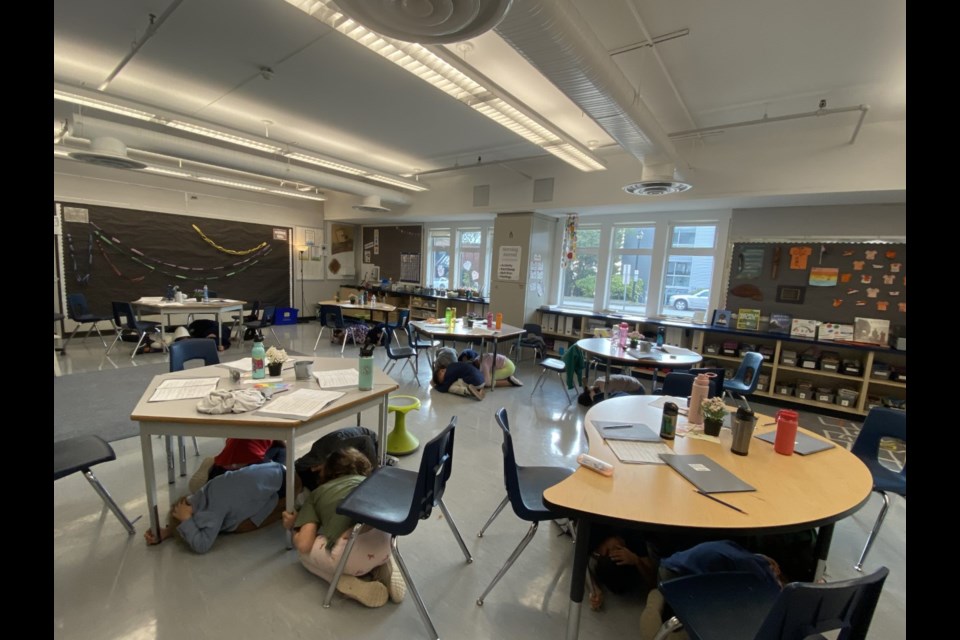On Thursday morning, schools across North and West Vancouver played host to the Great BC ShakeOut, an annual earthquake drill that saw 500,000 people across the state practise their earthquake emergency response.
Students and teachers put into action the Drop, Cover and Hold On response, recommended by Emergency Management as the safest in such scenarios. With more than 3,000 earthquakes each year, British Columbia being the most seismically active area of Canada, swotting up on what to do to remain safe in such situations is as vital as any school curriculum.
"Every classroom has these conversations at the beginning of every school year," said Laine Anderson, vice-principal of West Vancouver's Irwin Park Elementary.
"Obviously these students live in an area where earthquakes are a very real possibility, so this practice is all about making that muscle memory so that we know what to do if an emergency was to happen."
For the most part, Anderson said, the children are unperturbed by the practice. Previous drills and a "be prepared, not scared" approach instilled into students has ensured even the youngest of them are accustomed to emergency procedures.
In one Grade 2/3 class on Thursday morning there had even been an excitable atmosphere in the air, with kids whispering, smiling and exchanging knowing glances as Anderson's voice rang out over the PA system.
"Good morning Irwin Park. In just a few moments we will have our first earthquake drill of the school year," she said.
Anderson reminded the students that once the earthquake begins – indicated by a sound recording of rumbling and falling debris – they should put their learning into action and "drop, cover, and hold on."
Students in a space without tables, like in the hallway or gym, should move to an interior wall, kneel down against it, bow their head and cover their neck and head with their hands. Those in the library or music room should move away from the shelving, she said.
Immediately after the sound recording had begun, the Grade 2/3 class had burrowed themselves under the tables, each bunched up into a small ball with their hands folded across their heads.
Together the classroom counted 60 seconds, long enough to determine the safety of the area outside the table, and Anderson gave permission for the standard school day to resume.
Especially quick into action was seven-year-old Emma, who said she feels "very ready" for any emergency event as the latest drill was one of many she has experienced during her time at Irwin Park.
"We did drills about five times in Grade 1, and now I've done this one for earthquakes I know I am ready for anything," she said.
Emma said she wasn't scared at the prospect of an earthquake occurring because she knew what to do, and could give advice to those who didn't.
"Drop down immediately. Get into focus. Don't talk. Hold on tight. And fully cover your neck and head," she said.
Mina Kerr-Lazenby is the North Shore News' Indigenous and civic affairs reporter. This reporting beat is made possible by the Local Journalism Initiative.
MKerrLazenby@nsnews.com
twitter.com/MinaKerrLazenby



